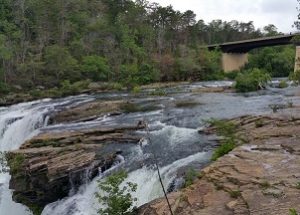Thirty years ago, the idea of designating Little River Canyon as a unit of the National Park Service seemed far-fetched to many. With a significant portion of the land owned by Alabama Power Company, and various smaller parcels scattered across DeKalb and Cherokee counties, the task appeared insurmountable.
Local sentiment was divided, with some community members expressing their opposition through handmade signs bearing slogans like “Keep out NPS” and “National Park NO!” However, against the backdrop of skepticism and dissent, a remarkable coalition emerged. Residents, environmentalists, civic leaders, and representatives from Jacksonville State University (JSU) joined forces with Alabama Power and local county and city officials.
This unprecedented partnership defied the odds, proving that collaboration could conquer even the most daunting of challenges. Key figures in this movement included Pete Conroy, the director of strategic partnerships and special projects at JSU, and Charles McCrary, then-vice president of Alabama Power. Their advocacy efforts culminated in a pivotal moment when they were called to testify before Congress, outlining the importance of protecting the canyon’s natural beauty.
While facing significant resistance from some congressional members and external organizations, the collaborative efforts bore fruit. Critical support emerged from influential political figures such as U.S. Representative Tom Bevill and U.S. Senator Richard Shelby, who recognized the value of preserving Little River Canyon for future generations. Today, Little River Canyon stands as a testament to what can be accomplished when communities unite for a common cause.
A recent study shows that Little River Canyon has a $500 million economic impact on the area each year.








Comments